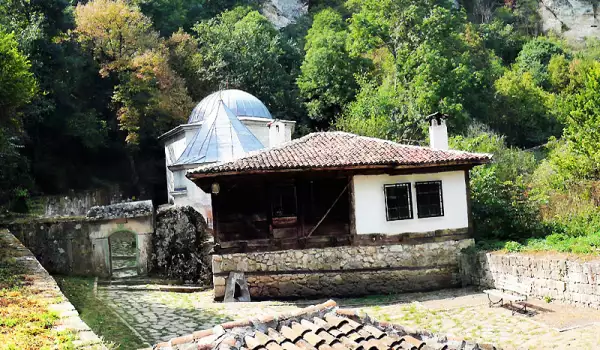Demir Baba Teke

Demir Baba Teke, is a small mausoleum characteristic of the Ottoman faith by Alevis of whom remained part of the religious community of the Turks and Kurds.
The historic monument, Demir Baba Teke is located in northeastern Bulgaria, close to the village Sveshtari entering the area of the city district, Isperih.
The historic landmark is the shrine-tomb of Demir Baba who was a saint of the 16th century, having proto origin. It is believed that the turbe was hoisted on the Thracian sanctuary of 4th century BC.
At this place, at the foot of Kamen Rid between the 6th-4th century BC was an indispensable source. Beside it was the sanctuary of the underground gods of water and health. It existed until the beginning of the new era, but until now has remained the rock-altar, which can be seen at the entrance to the courtyard of Demir Baba Teke.
Runners that were carved into the rock, which were intended for the draining of water, wine and sacrificial blood have survived until today. The rock sanctuary has been preserved and embedded in the north and south wall of huge rocks. It is believed that if you lie on them, this will bring one health, strength and energy and that is why to this day people go there and lie on the sacred stone.

Demir Baba Teke is one of the most visited places, having visits also from orthodox Muslims even after the liberation of Christians from the surrounding villages.
There is a legend which tells how the area was stricken by the unprecedented drought. In this difficult moment Demir Baba heard the prayers of people and fumbled with ones hands in the rock. Miraculously life-giving water rose from her life giving hands, resulting in the memory of this divine moment, the spring is now called , five fingers.
Demir Baba Teke is a sacred site for both Muslims and Christians. The people of both religions still go there and sleep on the sacred rock with the belief that it will heal and will give new powers. By 1927 the dome was as a Christian cross and the Muslim crescent.
The dome was built from local rock, sandeel and dry masonry. The top design has a hemispherical dome, which reaches a height of 11 meters above ground.
The tomb of the saint hermself, Demir Baba is located in the middle of the septangular room that holds a length of 3.74 meters. The grave is oriented so that head lays to the southwest, and is built of brickwork in which the surface is part of the tree.







